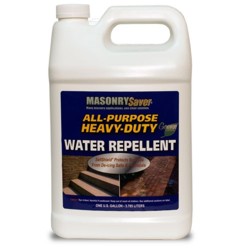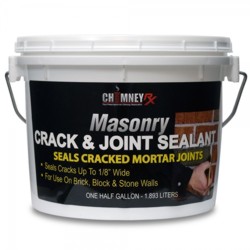Sealing Brick
The Future
If you want to set up your son or daughter in a future business that is going to do quite well, I suggest you teach them how to remove the bottom eight courses of brick from a house without causing the brick above to collapse. They will also need some carpentry skills as they will be replacing the rim joist or band board that sits on top of the foundation. You see, these wood framing members and quite possibly joist ends and wall studs are going to be rotted. Years of penetrating moisture will have caused this damage. The sad thing is that all of this expensive work could have been avoided. If only the bricklayers and builders had done their homework and taken the necessary steps to collect and divert the incoming water.
Preventing Brick Leaks
Bricklaying is a true craft and art form. Like so many things in residential construction today, it is a dying craft. There are just a handful of masons who still strive to do quality work and want to do it right. You will find that the largest majority of these masons actually do commercial and institutional work.
Many residential masons - hundreds of whom work in southwest Ohio - do not have adequate training. They are young people who start to work for bricklayers who have not had any training themselves, or who do not stay abreast of new products or technology. The same thing may be true in your city or town. You may have bricklayers who are simply doing things wrong because they don't have a clue how to do them right!
You stop leaks in brick masonry by understanding that water does penetrate brick and mortar. You solve leaks by capturing the water and doing whatever is necessary to redirect it outside the brick wall. These methods are covered in greater detail later in this Bulletin.
Brick Sealers - What For?
I am amazed at how people think you have to seal masonry to preserve it. Fifty years ago there were no brick sealers! How have all those old brick buildings lasted? How did they survive before sealers? The point is that many of today's brick are much stronger than those that are 70 to 100 years old. Old brick sometimes didn't get fired as hot or as long as today's brick. There were inconsistencies in materials and quality standards. A good brick made today can easily last hundreds of years without a sealer.
The mortar many bricklayers use today is also different than that used 100 years ago. Today we use high strength mortars. They have considerably more cement in them than those from 100 years ago. The added cement helps to protect the mortar from weathering. As such, sealers aren't needed to protect the mortar.
The use of sealers has blossomed, I believe, because of the problems with leaks. The growth of the industry is also fueled by massive amounts of advertising. If a company can convince you that you have a problem and they have a solution, then a sale is a possibility.
A Finger in the Dike
So your bricks leak now. What do you do? A sealer - really, you want a water repellent - is maybe going to solve your problem. There is a possibility that the brickwork is so poor and the water entry paths so large that a water repellent just can't stop all of the water migration.
Remember that wind driven rain is your biggest culprit. The weight of the water driving against brick and mortar actually squeezes water through the brick like toothpaste through a tube. You have probably noticed this fact.
Some heavily advertised national brand products are film forming sealants. These are also rans as far as the Brick Industry Association is concerned. The best technology available involves special chemicals called silanes and siloxanes. These are cousins of the old standby silicone. Silicone is also a film forming sealant. It is not recommended for any masonry that can be subjected to freezing temperatures.
Many of the silane and siloxane sealers are environmentally friendly. They are water based and clear. They apply easily with a hand pump sprayer. I recommend that you follow the installation instructions to the letter. Some instructions are detailed and some water repellents may require two coats. Spend the time to read the label!
 |
 |
The above product links are affiliate links. I get a tiny commission if you purchase these from Amazon.
5 Responses to Sealing Brick